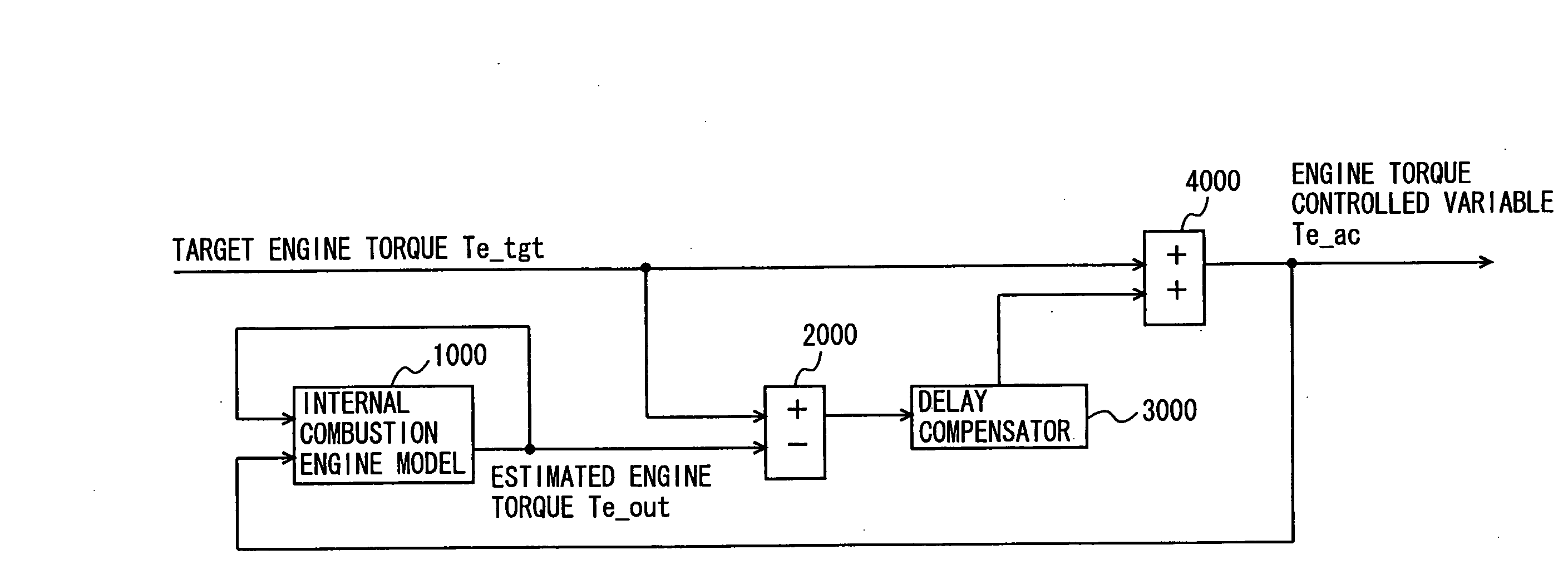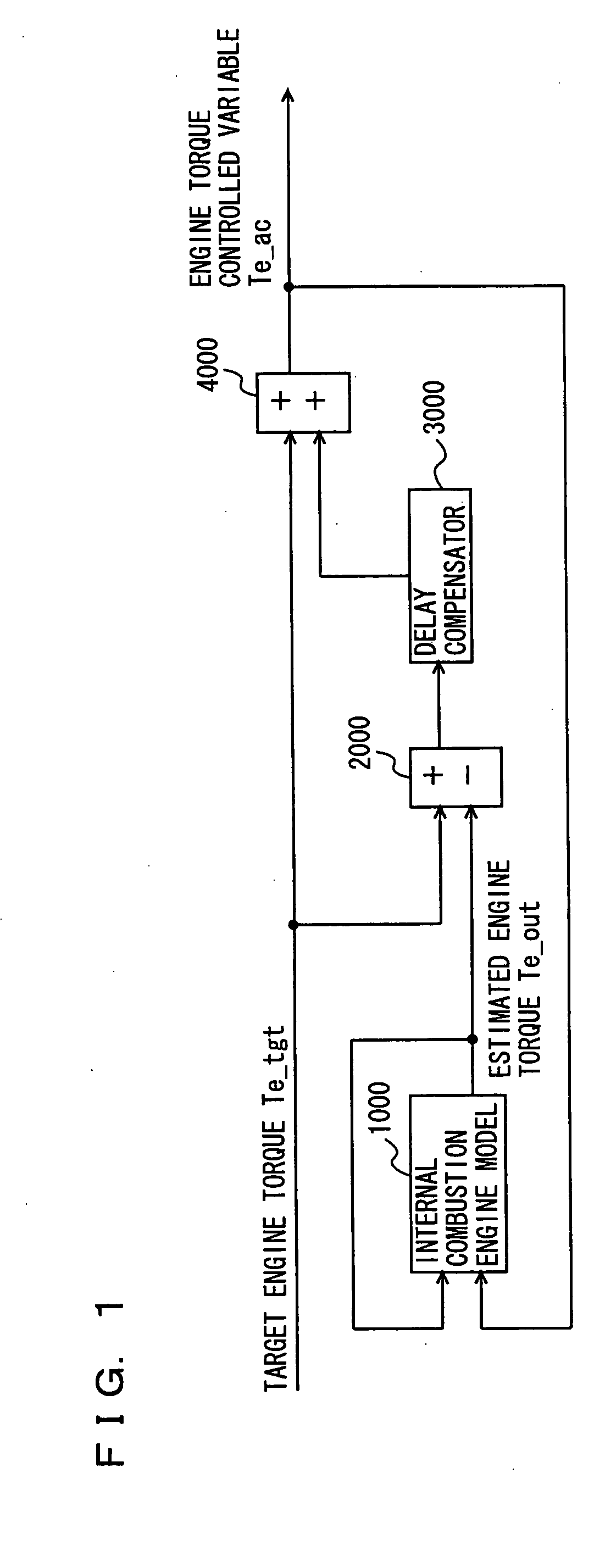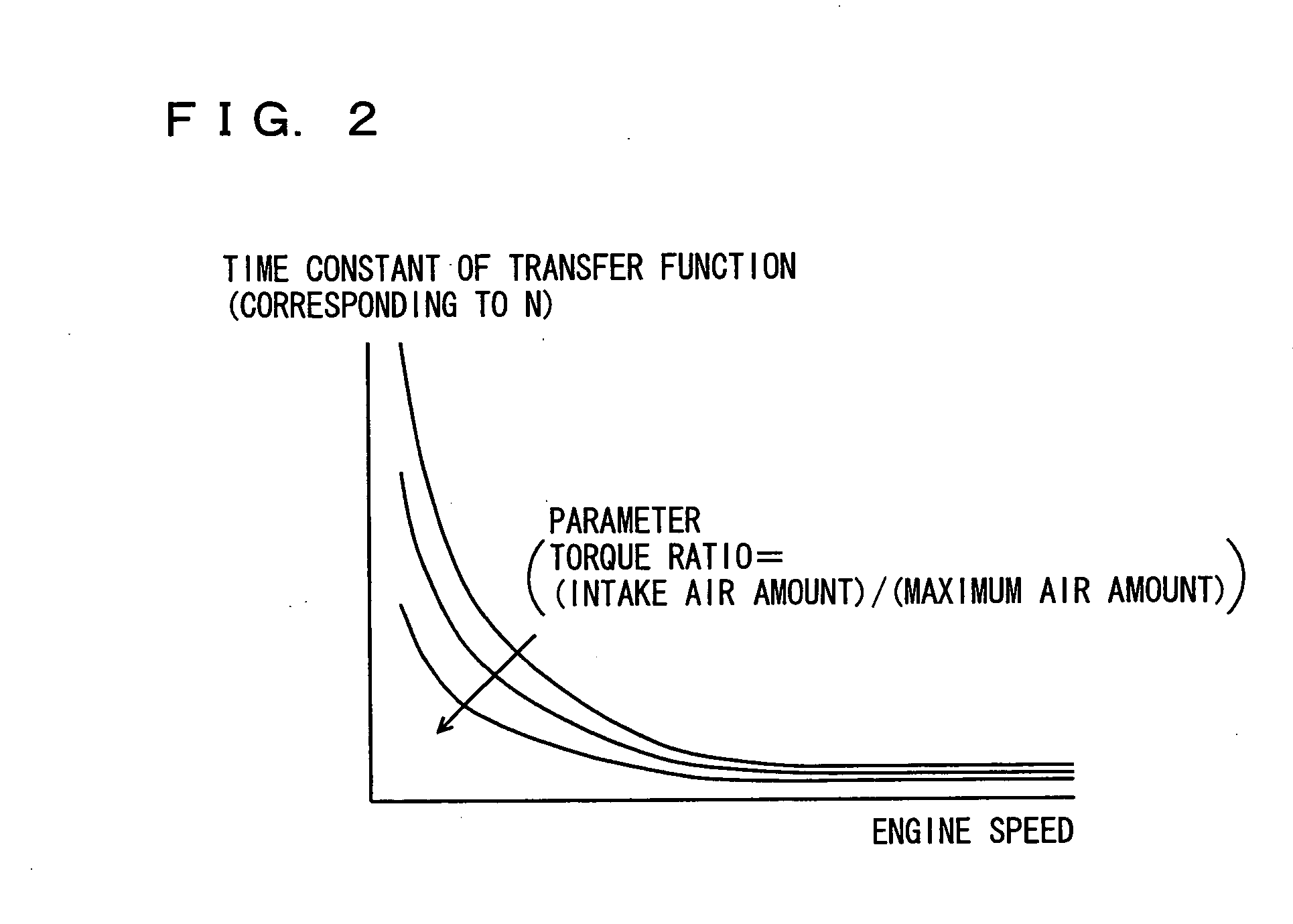Control device for internal combustion engine
a control device and internal combustion engine technology, applied in the direction of electrical control, process and machine control, etc., can solve the problems of driving torque deviating from the target value, vehicle behavior intended by the driver not being implemented, etc., to improve the control response characteristic and control stability in driving force control in the vehicl
- Summary
- Abstract
- Description
- Claims
- Application Information
AI Technical Summary
Benefits of technology
Problems solved by technology
Method used
Image
Examples
first embodiment
[0041]The driving force control system according to the present embodiment aims to improve the response characteristic. In calculating an engine torque controlled variable for implementing target engine torque, the driving force control system calculates the target engine torque by compensating for response delay in control with respect to a difference between the estimated engine torque estimated from the target engine torque controlled variable and the target engine torque. Thus, the controlled variable for which response delay in control has accurately been compensated for can be calculated. Here, an internal combustion engine model used for calculating the estimated engine torque is assumed as a linear model without including a dead time, so that implementation on an ECU (Electronic Control Unit) is facilitated.
[0042]A control block diagram of the driving force control system according to the present embodiment will be described with reference to FIG. 1. It is noted that a trans...
second embodiment
[0059]A driving force control system according to the second embodiment of the present invention will be described hereinafter. The driving force control system according to the present embodiment aims to avoid occurrence of overshoot due to a dead time in the internal combustion engine. In the driving force control system according to the first embodiment described above, as the transfer function for the internal combustion engine includes the dead time component, the transfer function for the internal combustion engine at the time point of calculation of the engine torque controlled variable and the transfer function when the torque controlled variable is implemented are different from each other, and overshoot such as overflow and underflow occurs. Consequently, a behavior of the vehicle is disturbed.
[0060]Therefore, in the driving force control system according to the present embodiment, taking into consideration the dead time in the internal combustion engine, the transfer func...
third embodiment
[0088]In the embodiments described above, delay compensation, or dead time compensation in addition to delay compensation is performed. Namely, such compensation is made (compensation is made to raise a controlled variable by multiplying deviation between an estimated actual output value and a target value by gain, allowing for delay and dead time). If such compensation is unexceptionally made for slight variation in the target value, hunting of an actuator (such as an electronic throttle valve adjusting an intake air amount) occurs and durability may be lowered. In particular, even when feedback control is being carried out and a stable state is attained (basically when there is no change in driving force requested by a driver or a vehicle control system (such as cruise control)), the target value calculated through operation is constantly varied. Normally, such fluctuation is minor and response characteristic thereto does not give rise to a problem. Therefore, in the present embod...
PUM
 Login to View More
Login to View More Abstract
Description
Claims
Application Information
 Login to View More
Login to View More - R&D
- Intellectual Property
- Life Sciences
- Materials
- Tech Scout
- Unparalleled Data Quality
- Higher Quality Content
- 60% Fewer Hallucinations
Browse by: Latest US Patents, China's latest patents, Technical Efficacy Thesaurus, Application Domain, Technology Topic, Popular Technical Reports.
© 2025 PatSnap. All rights reserved.Legal|Privacy policy|Modern Slavery Act Transparency Statement|Sitemap|About US| Contact US: help@patsnap.com



